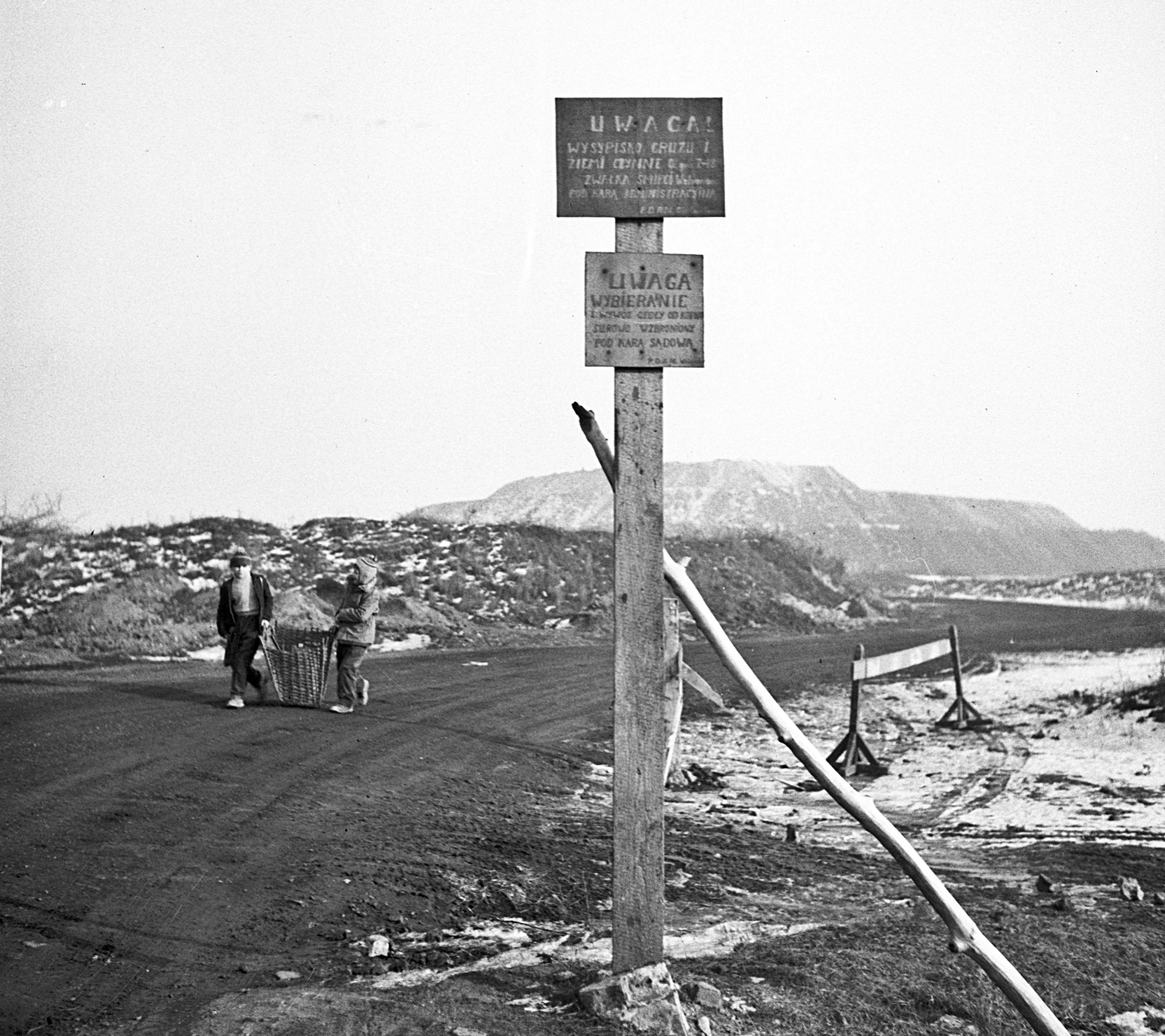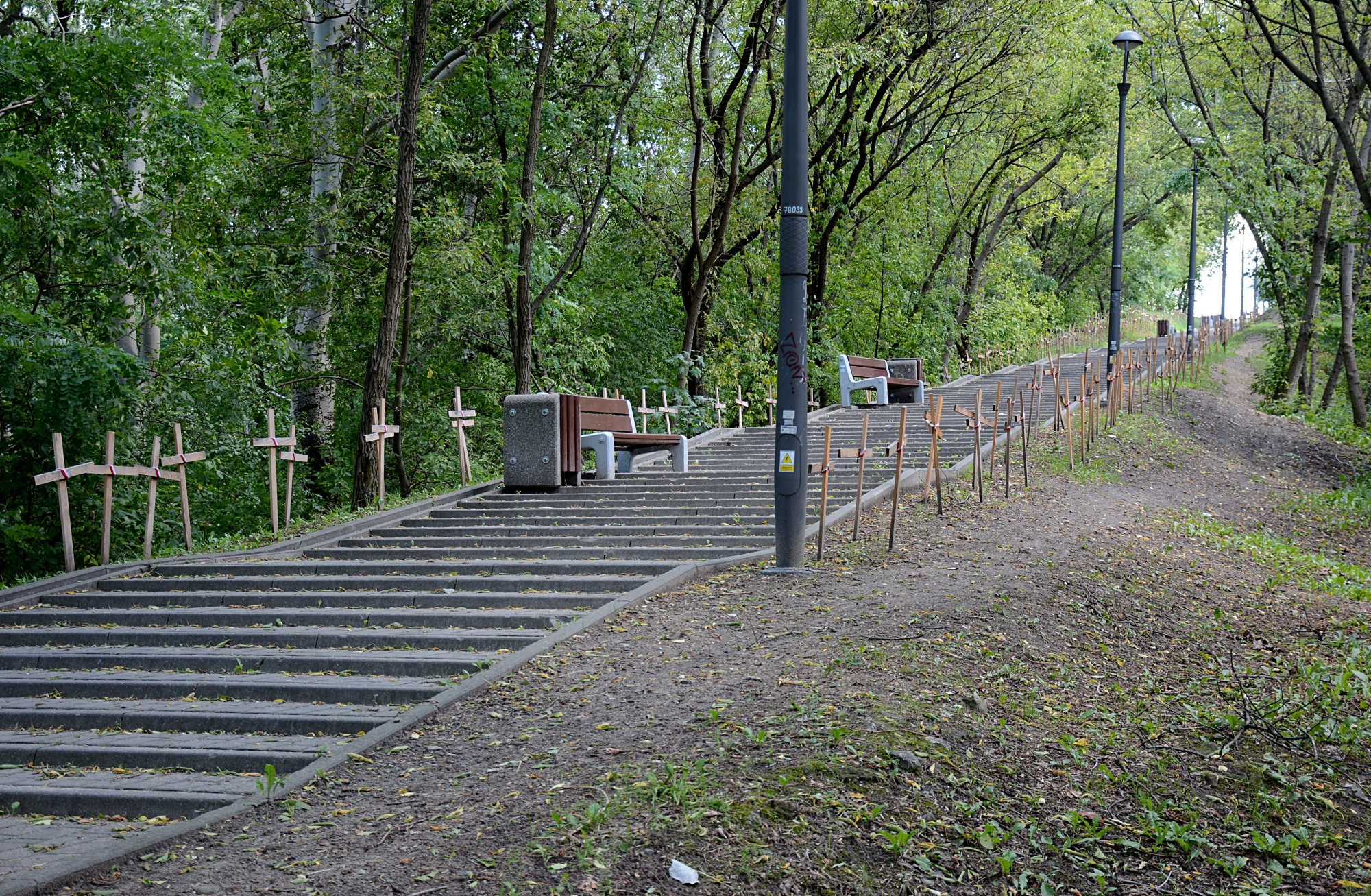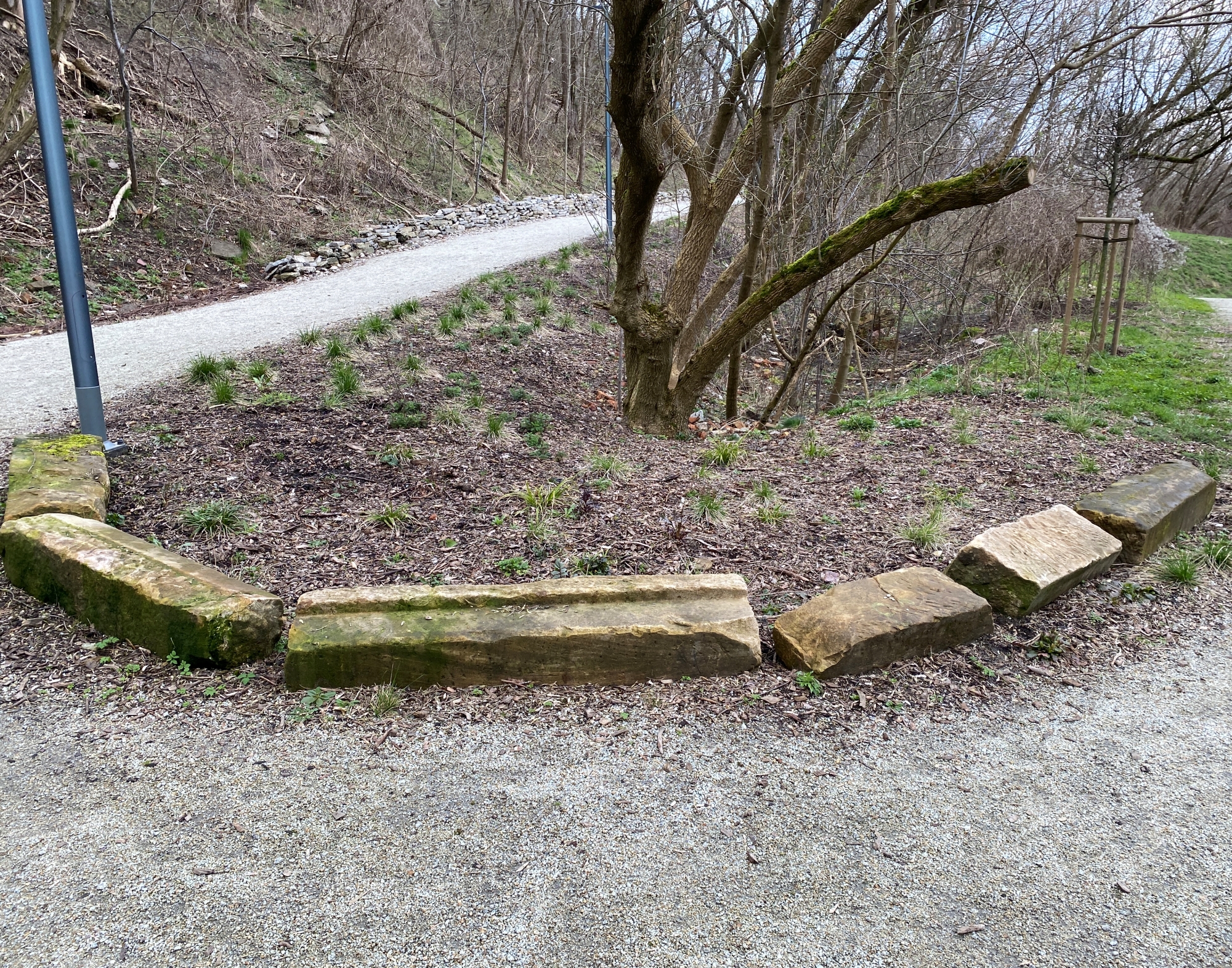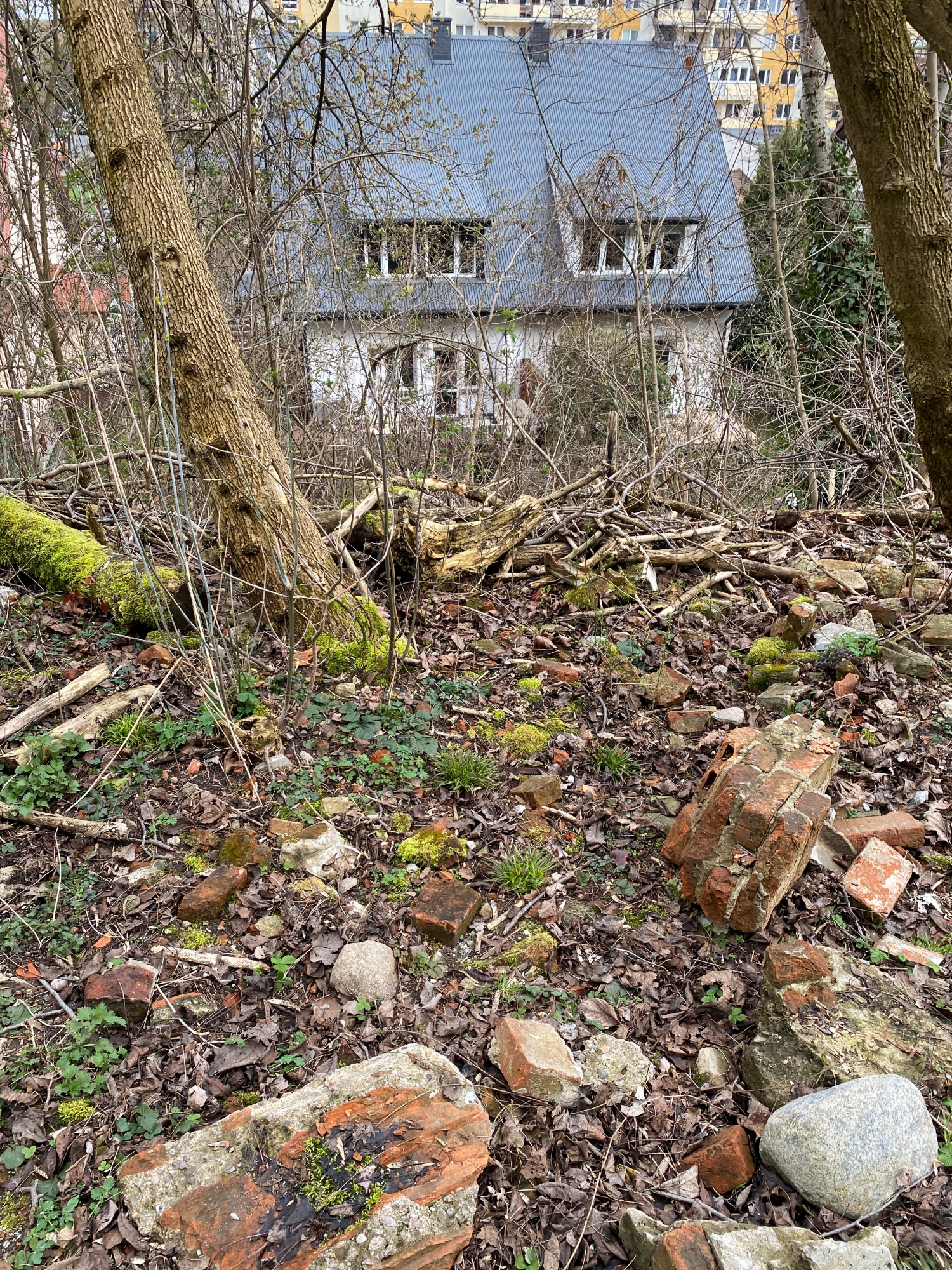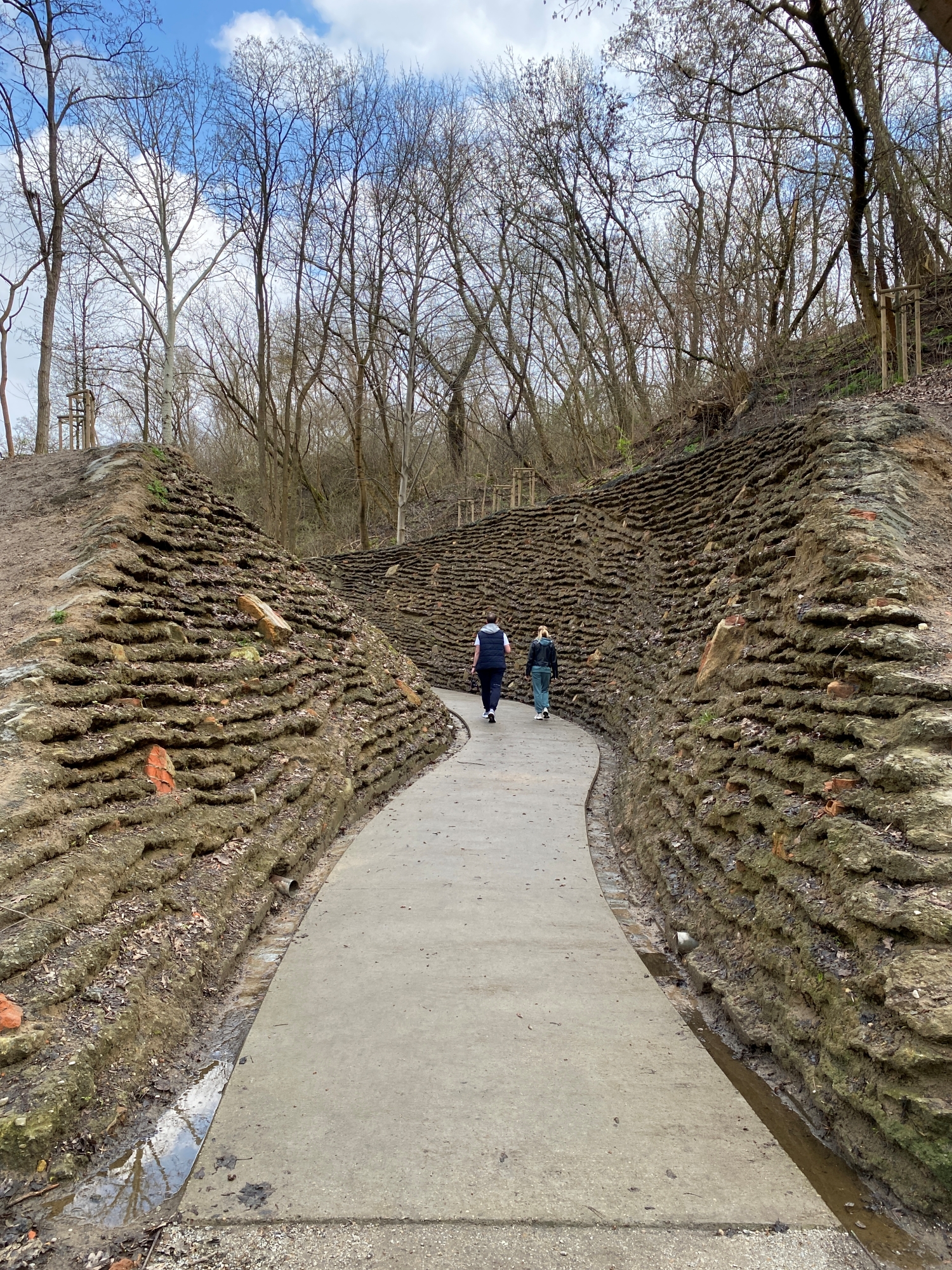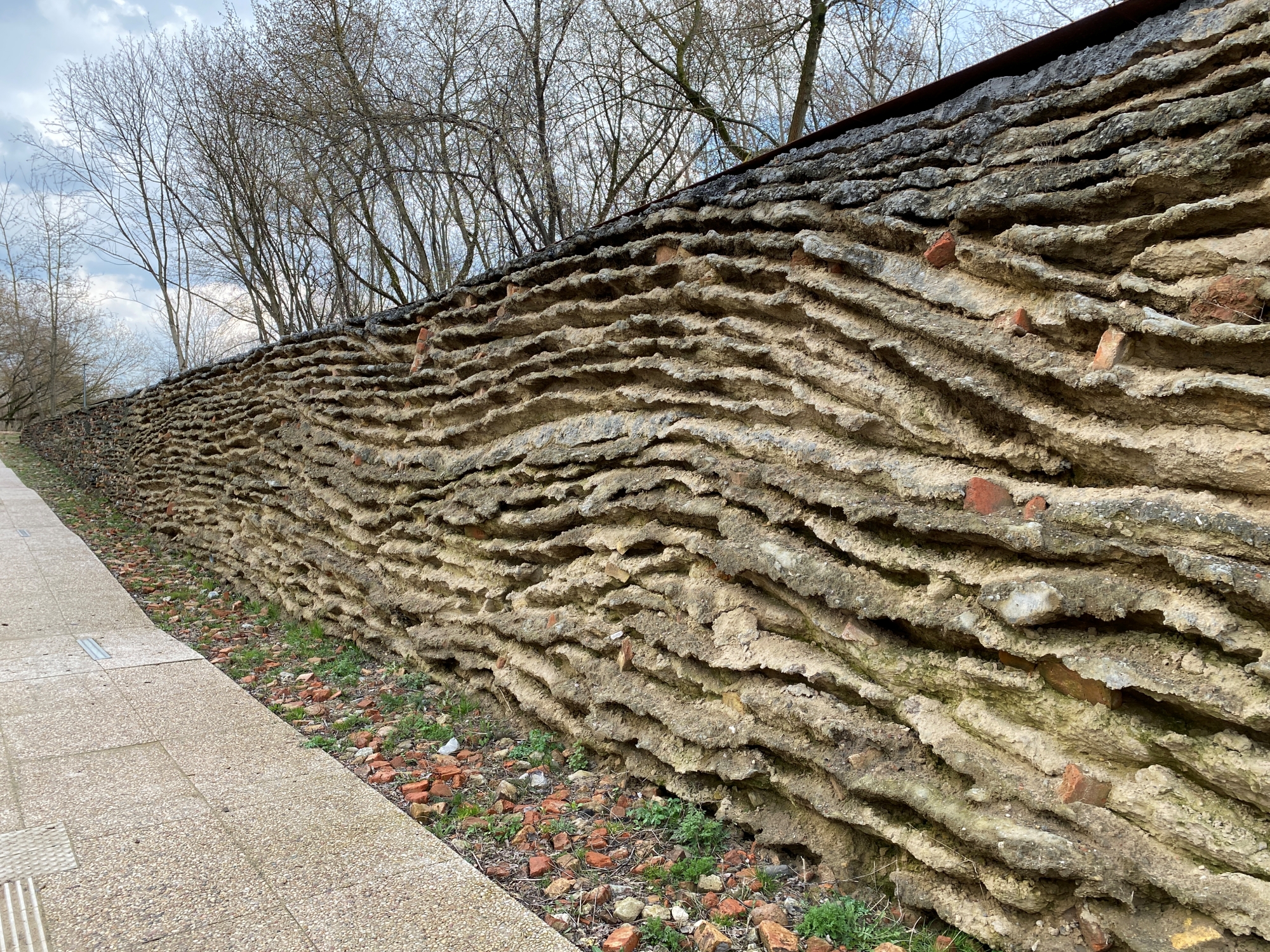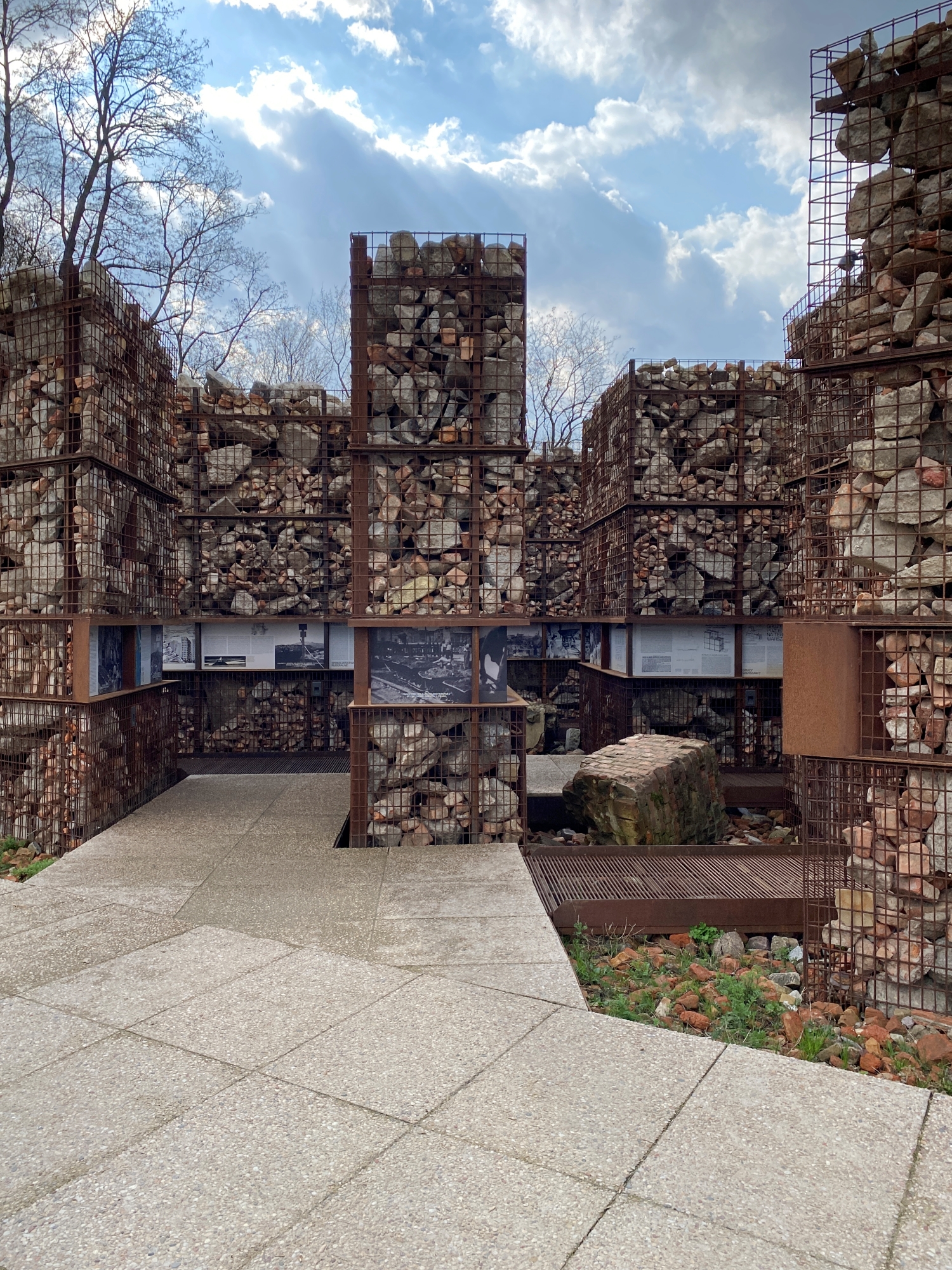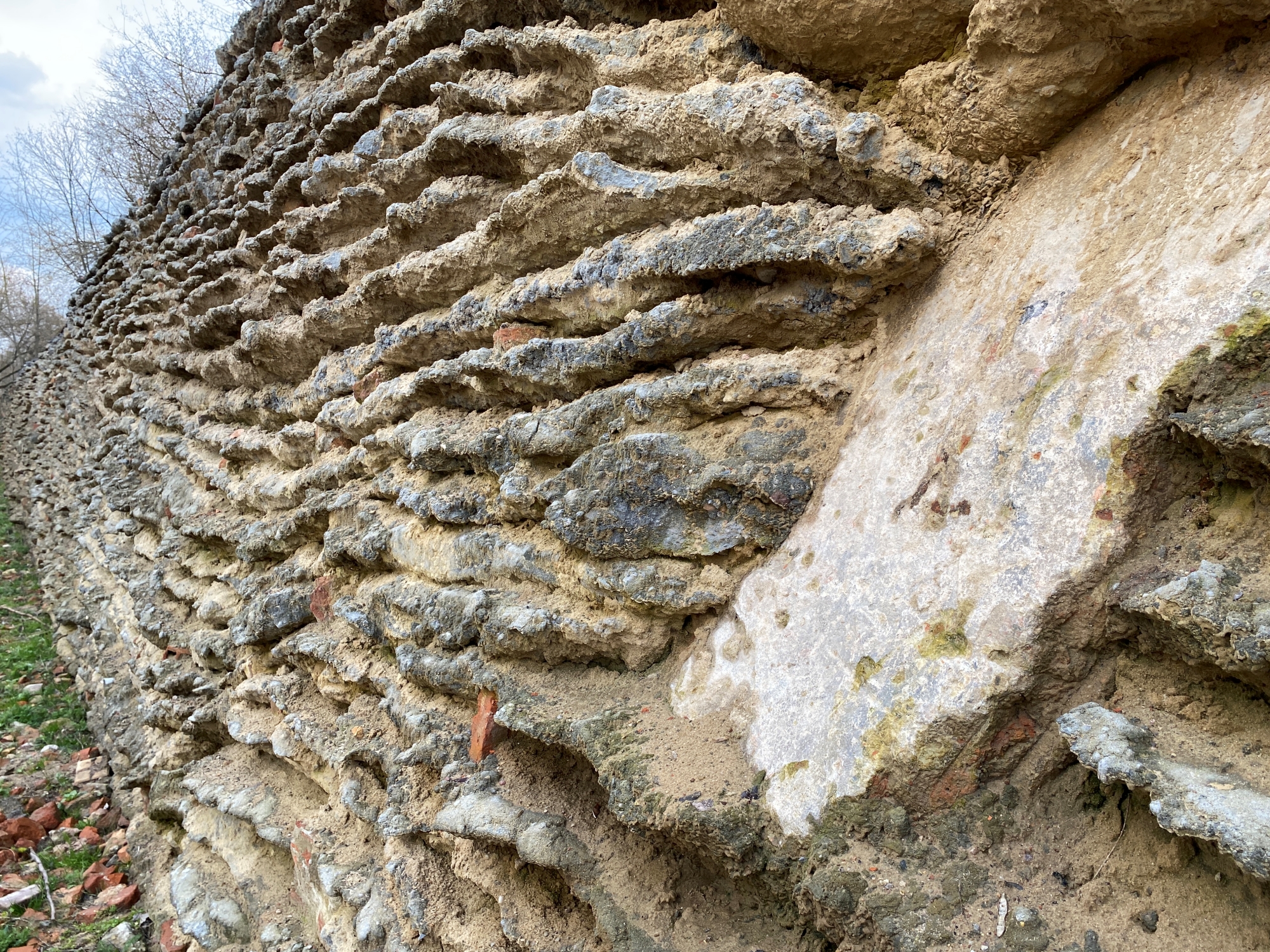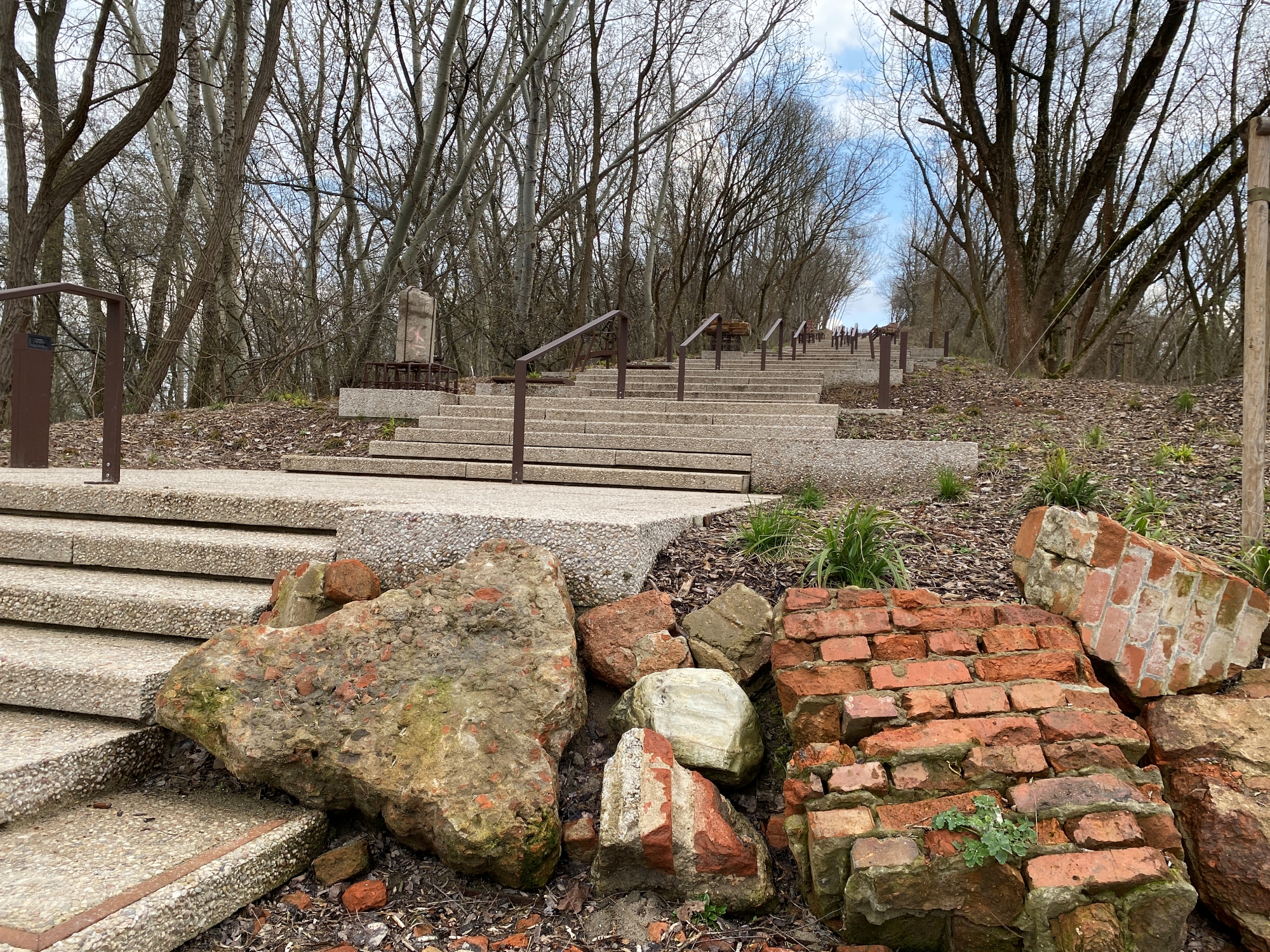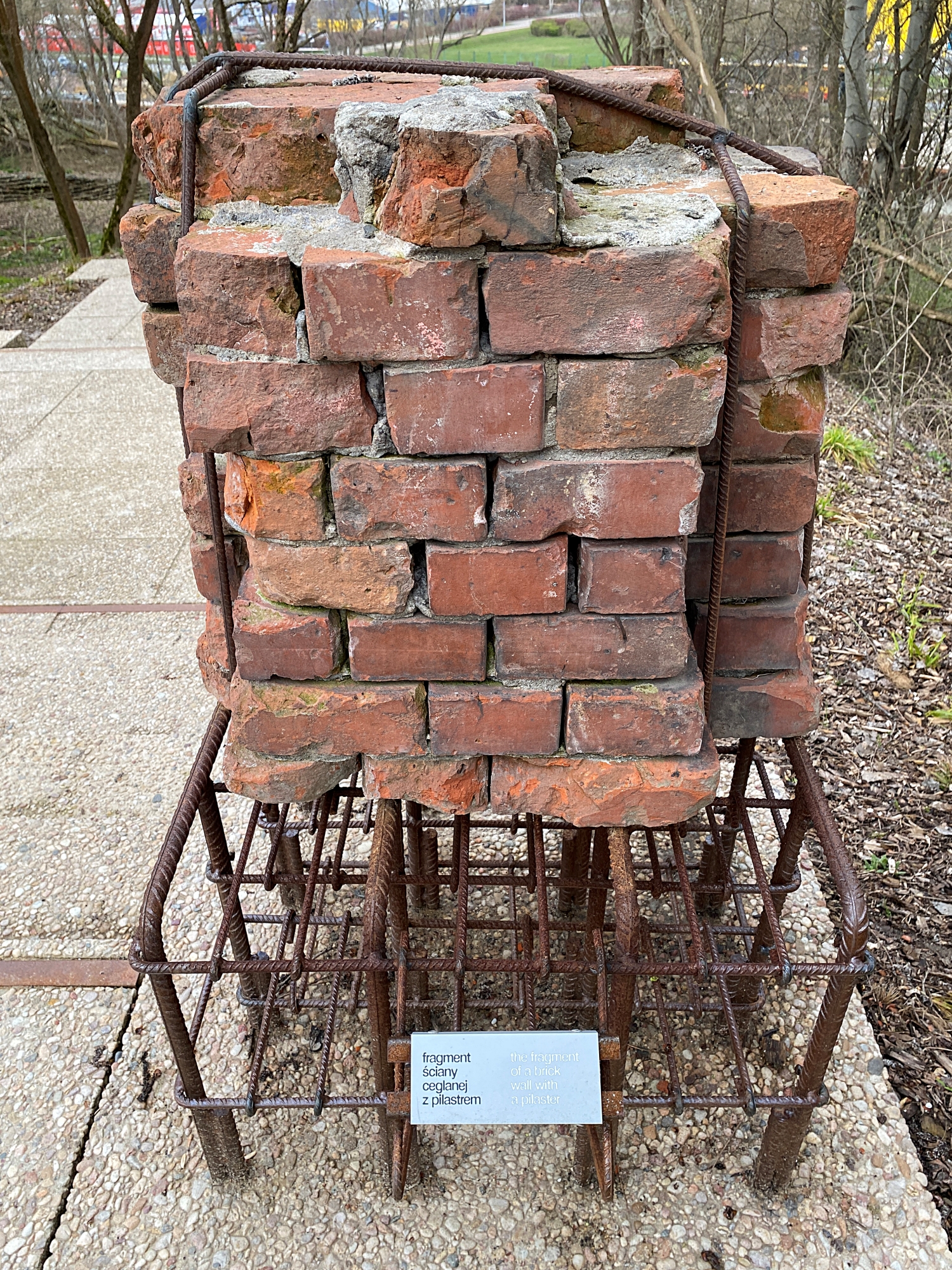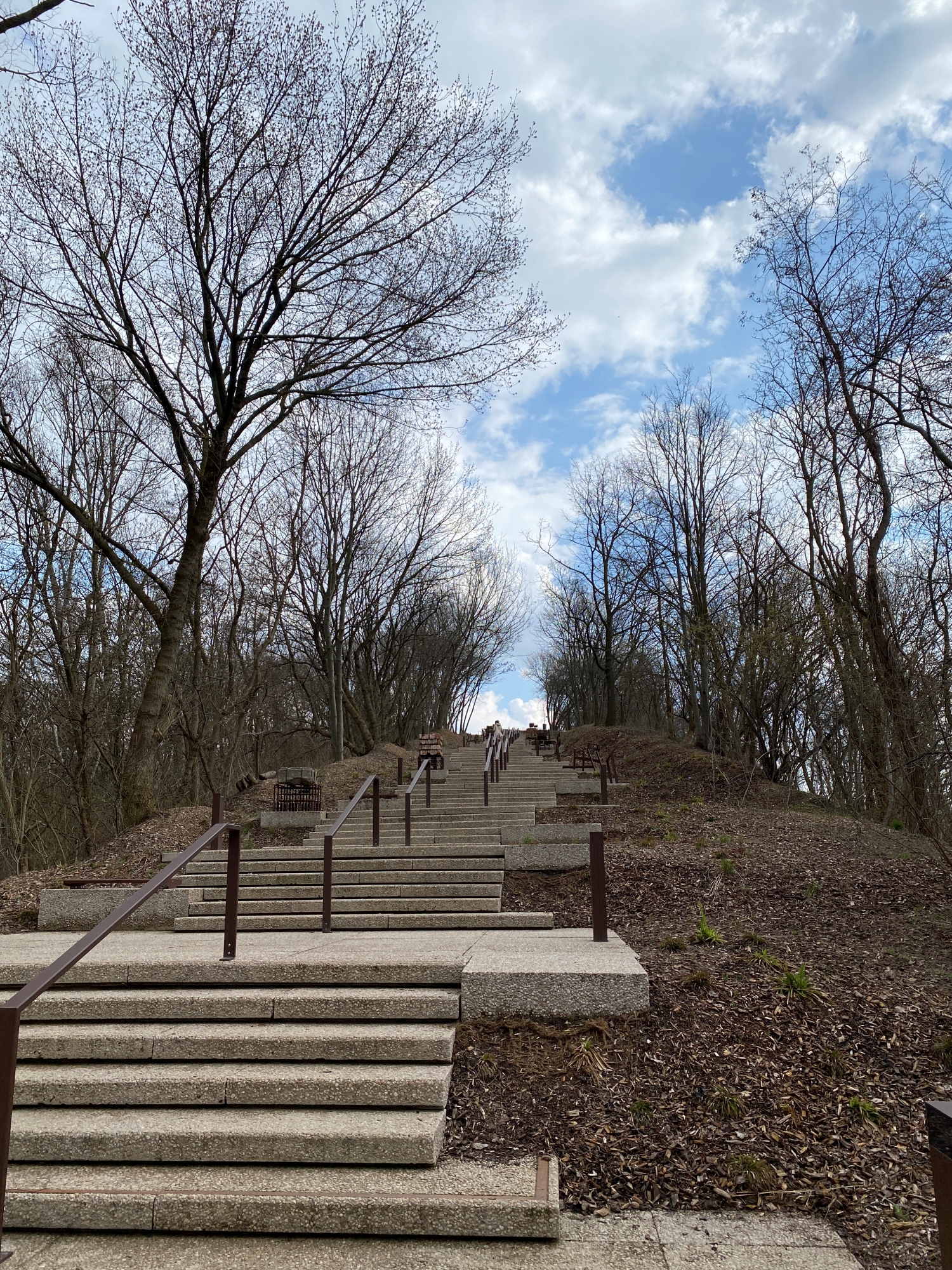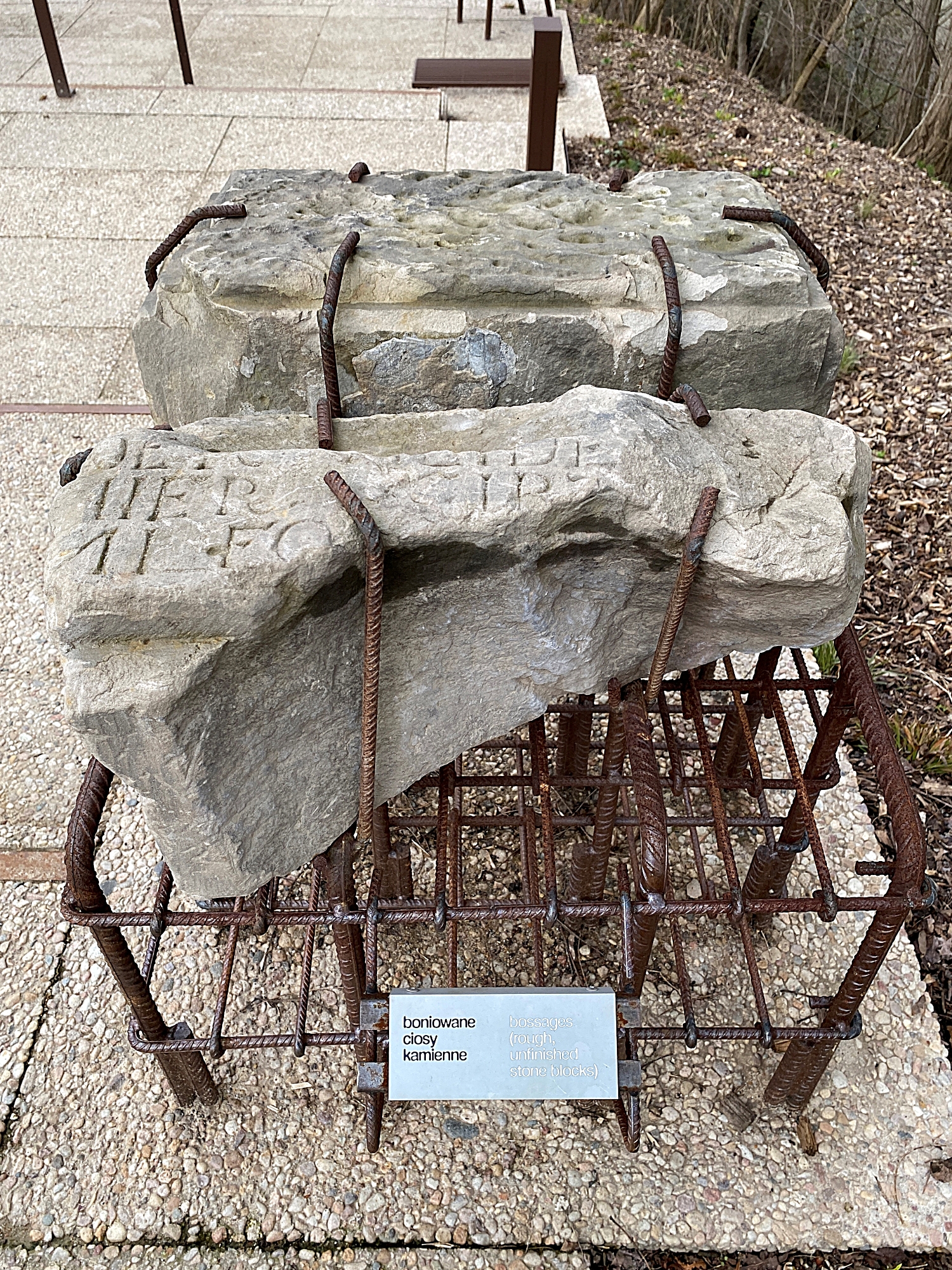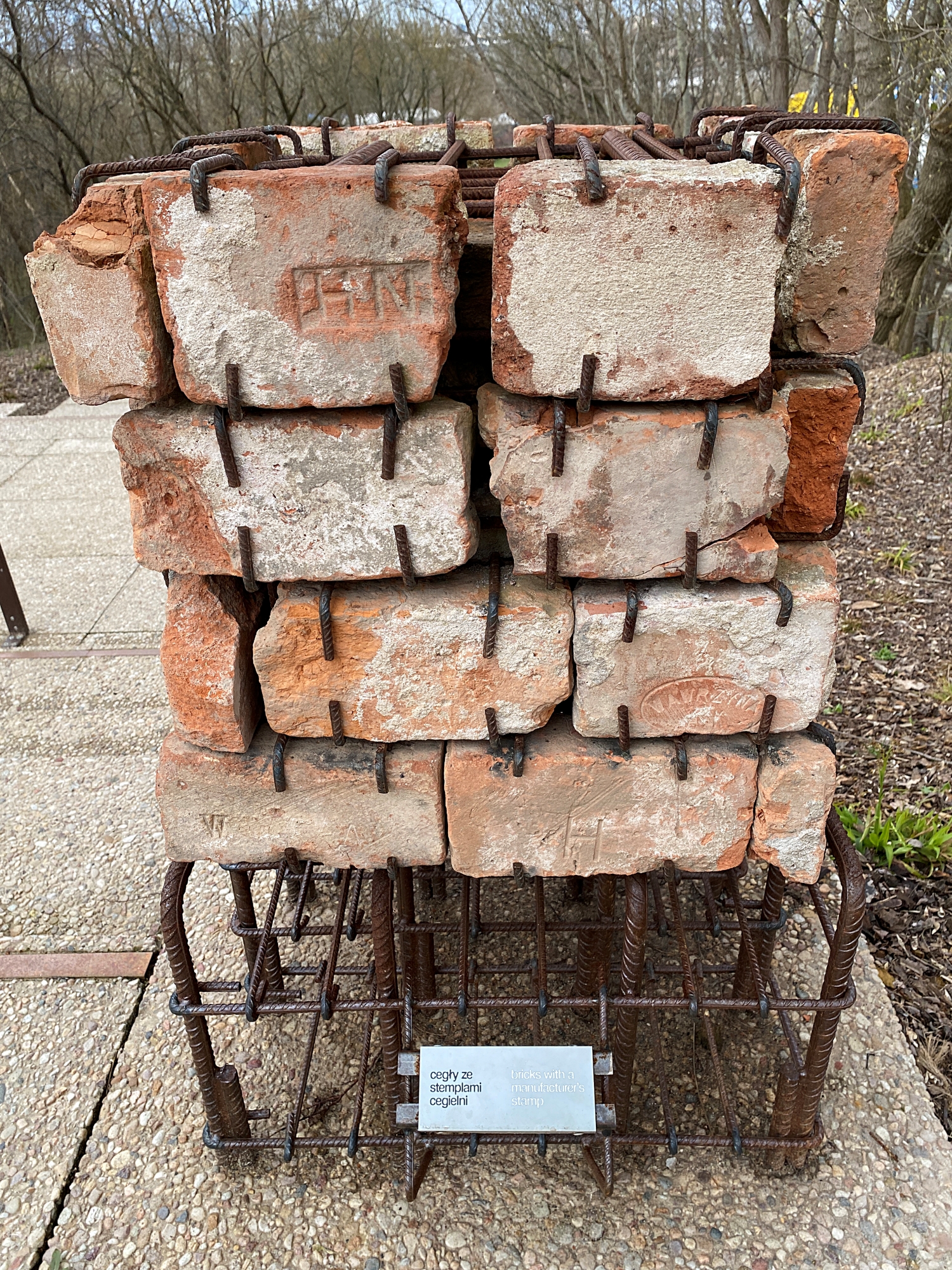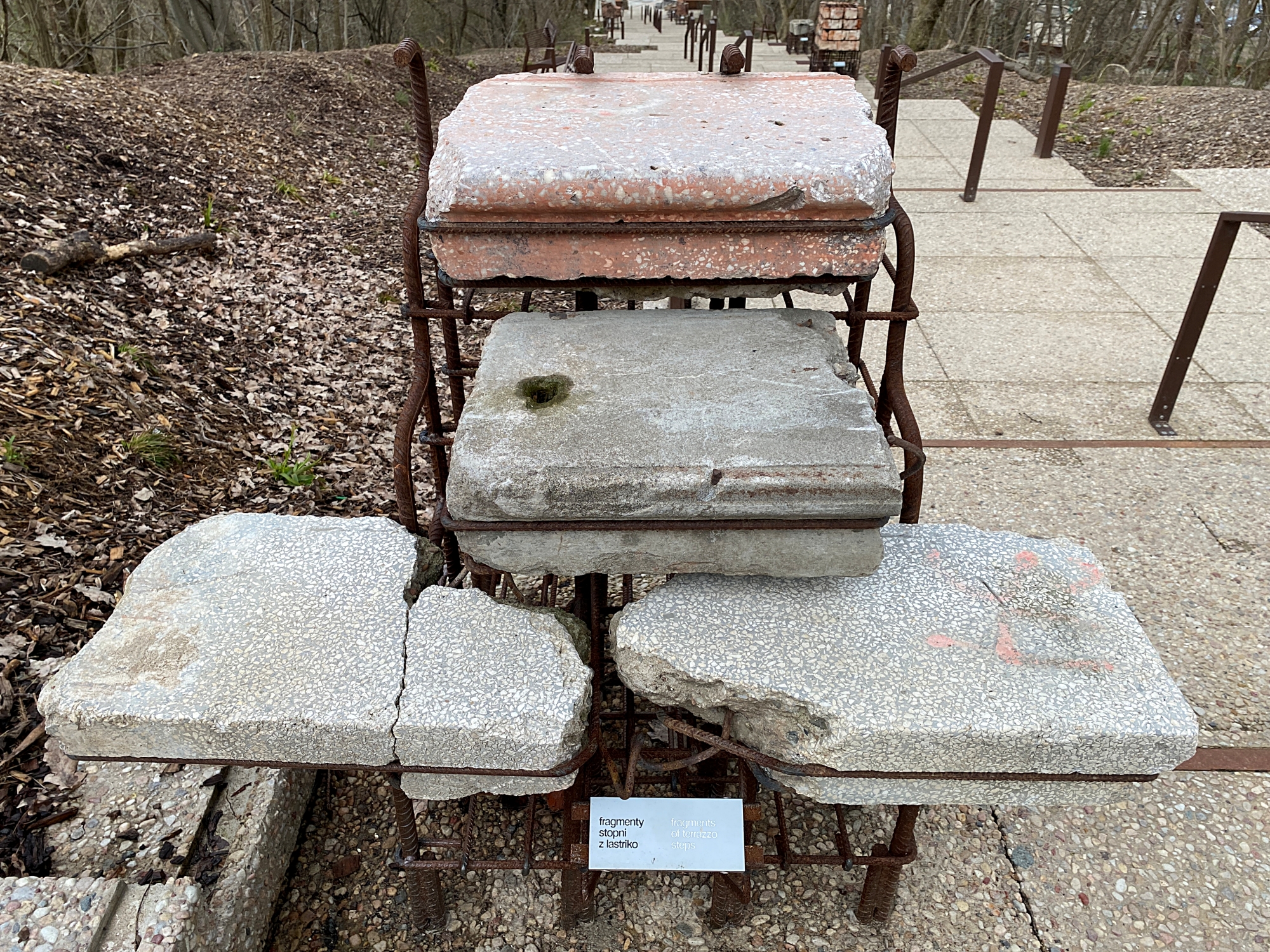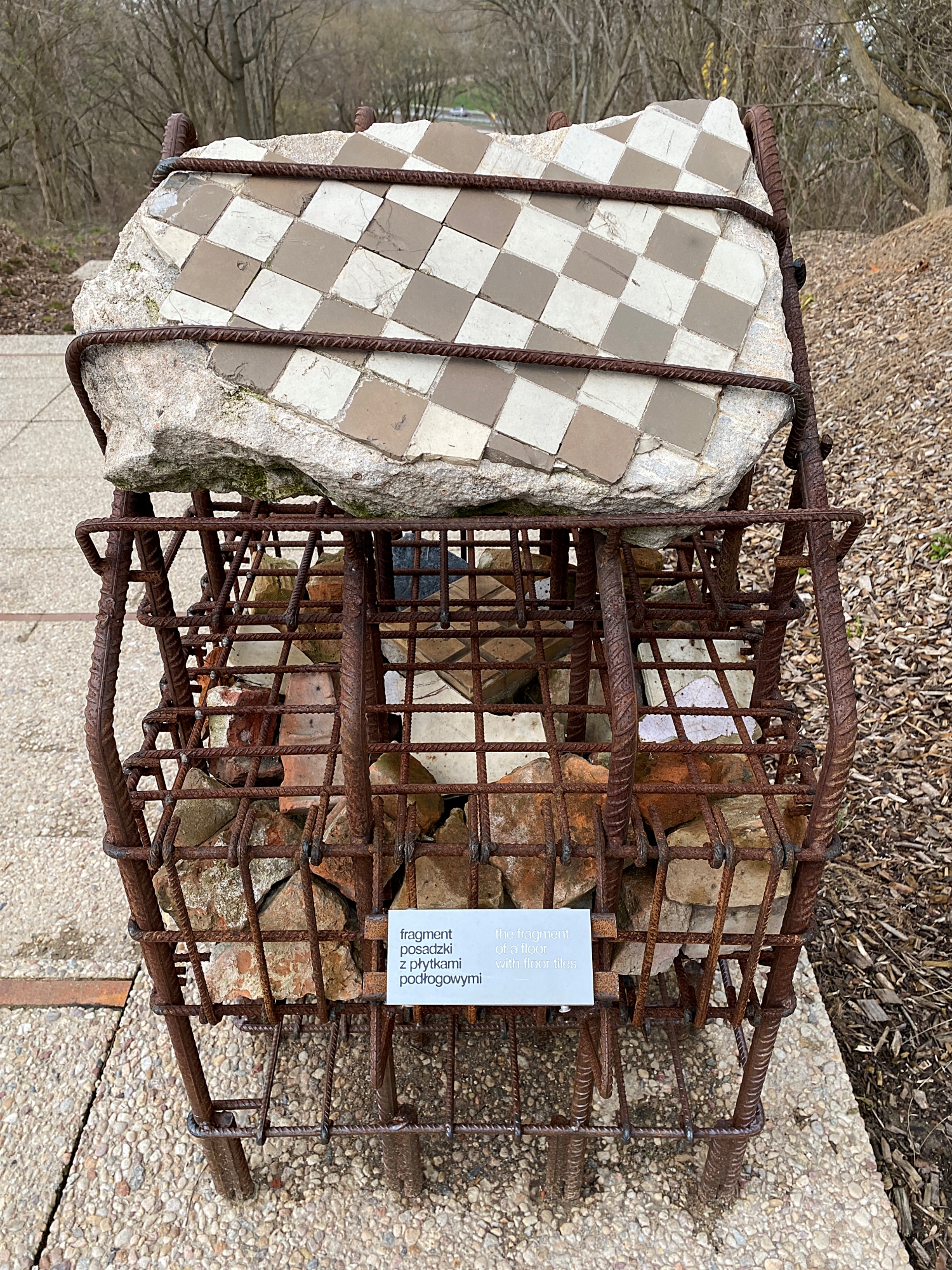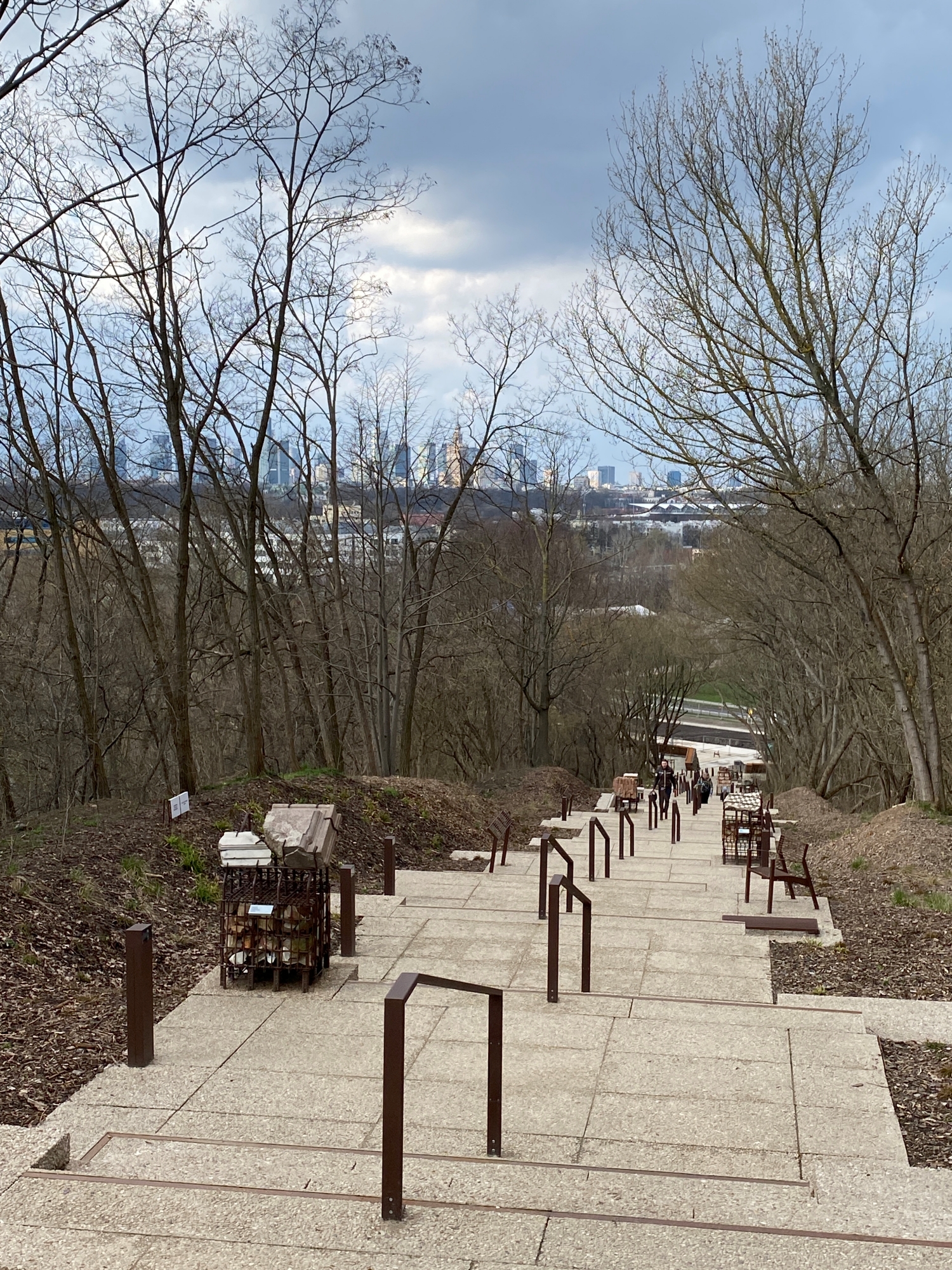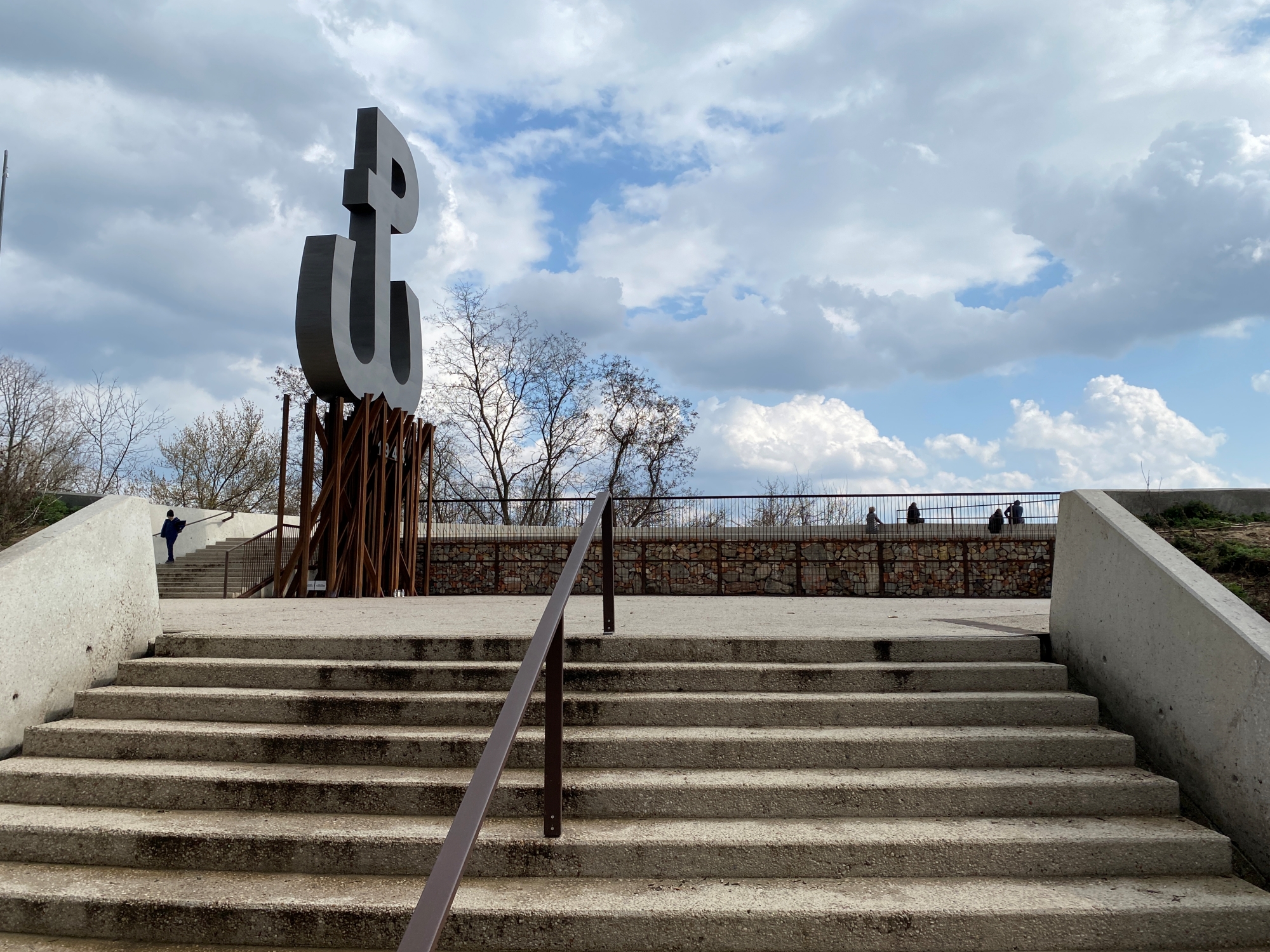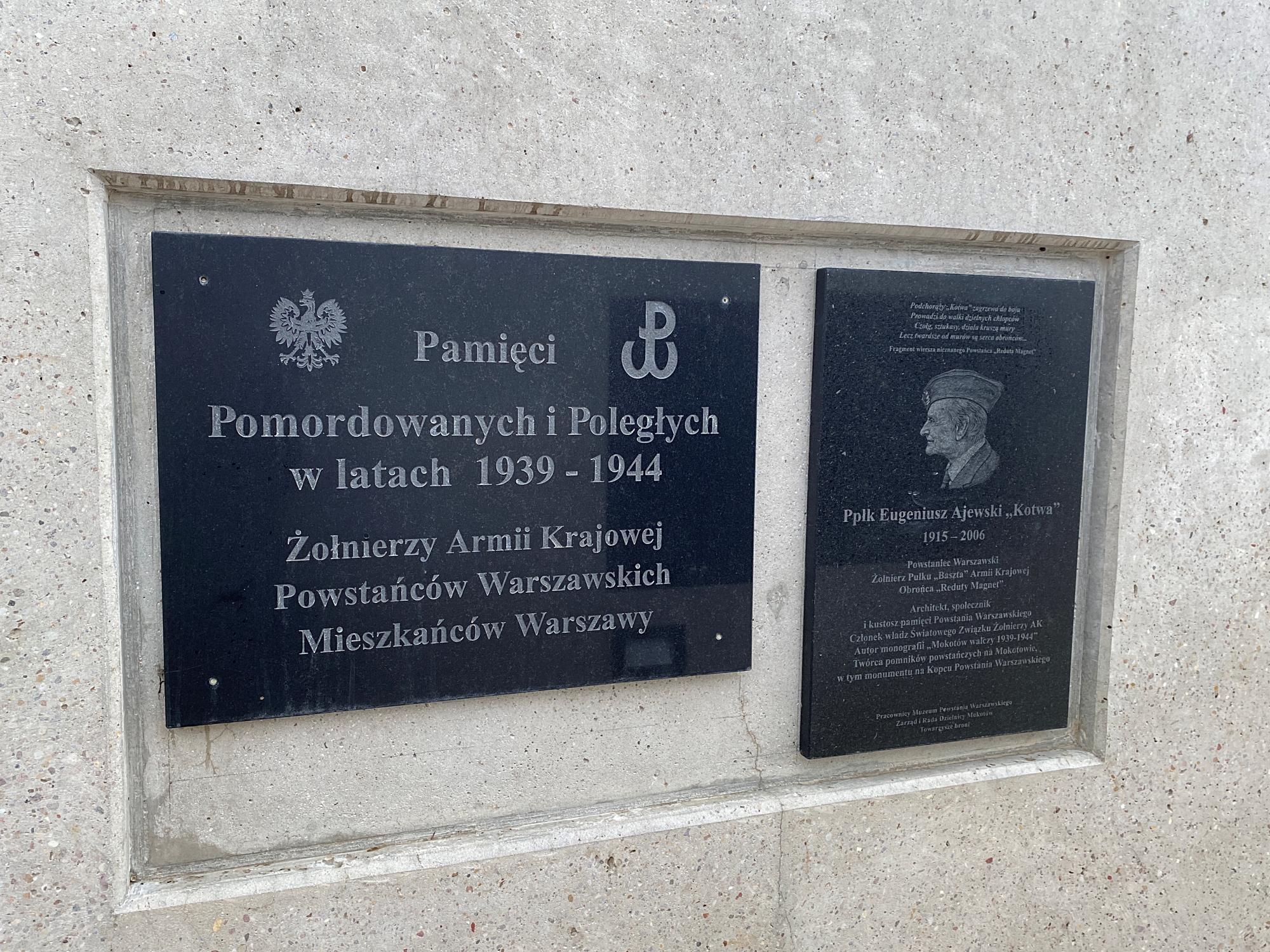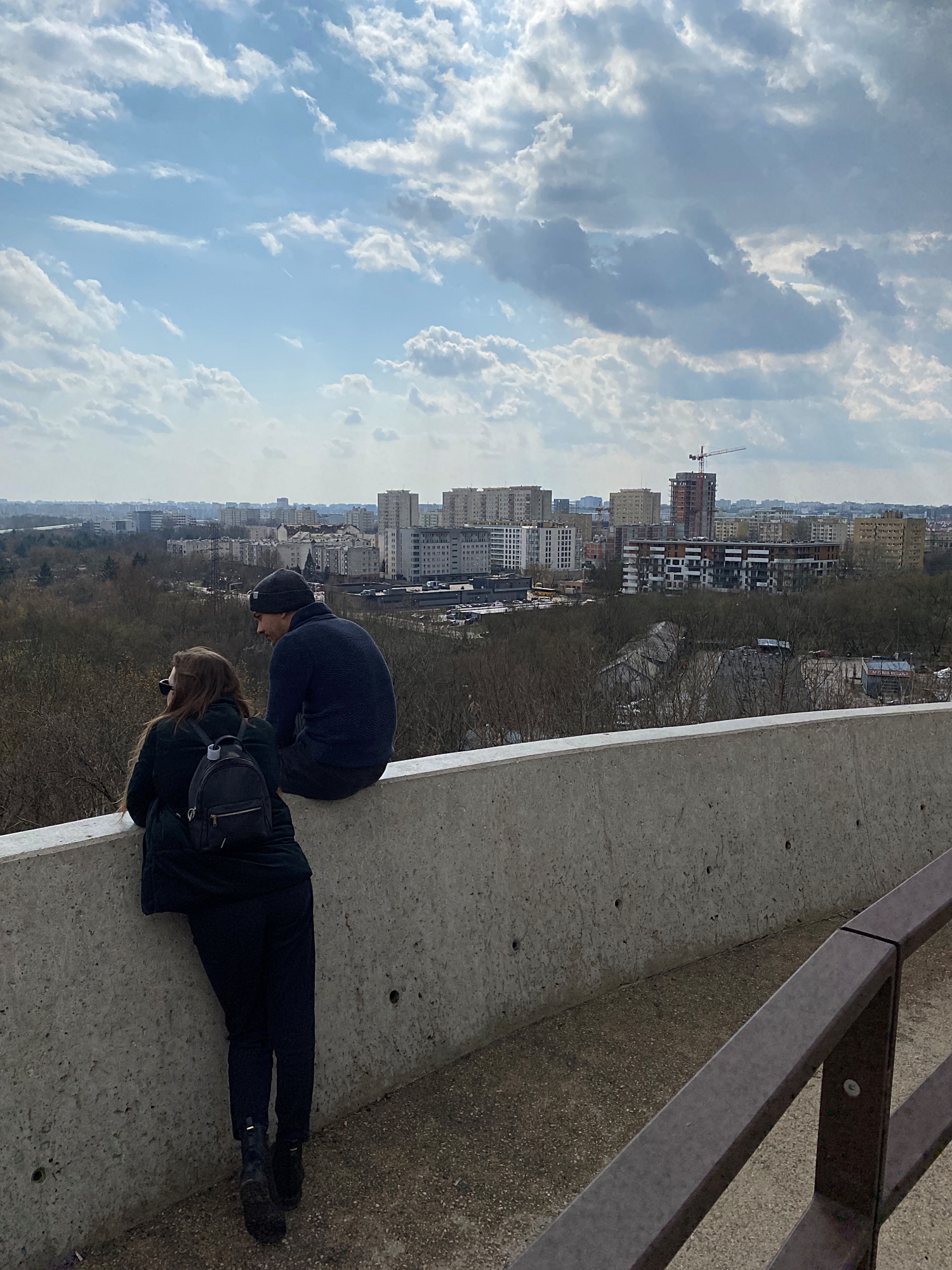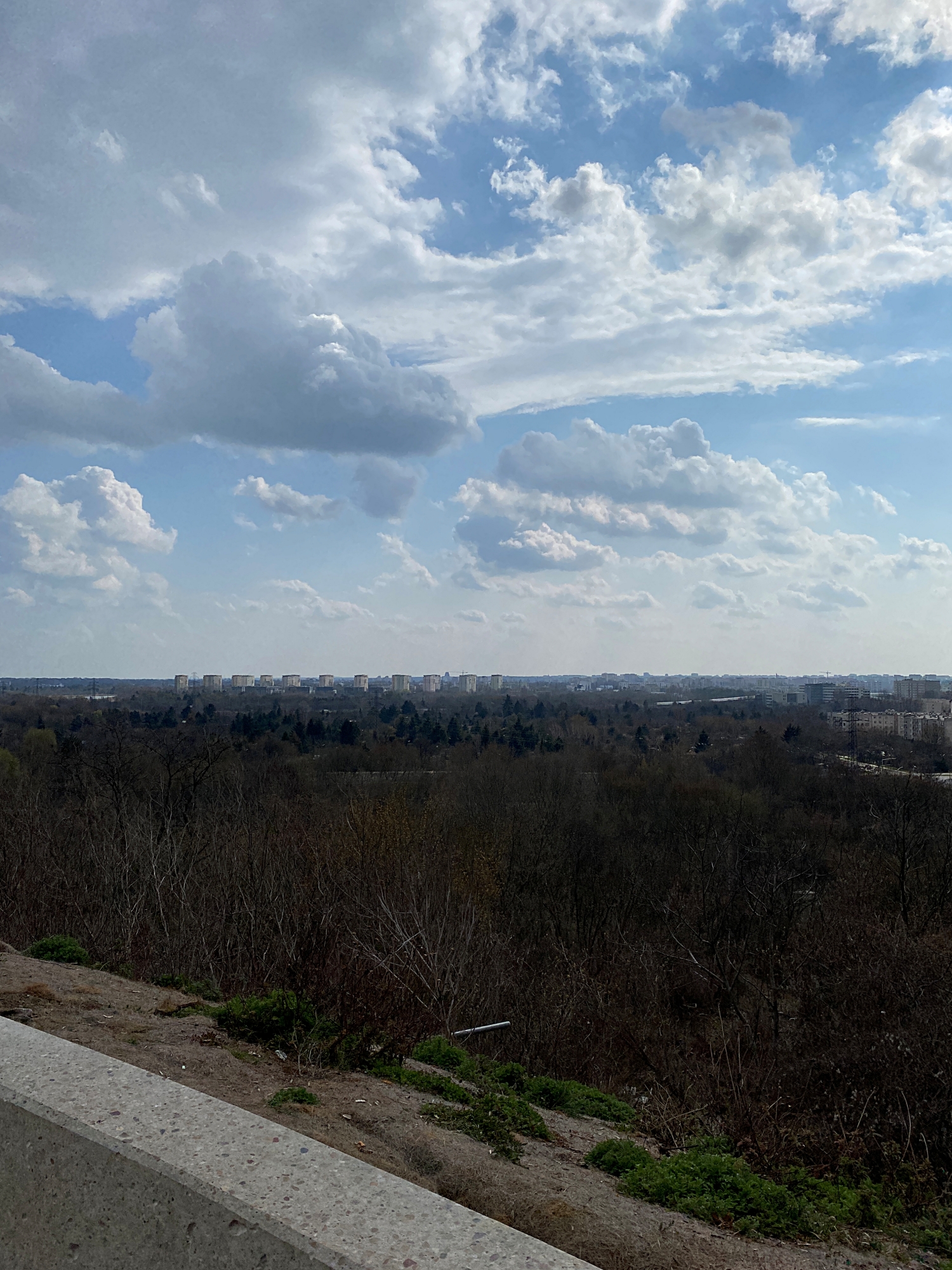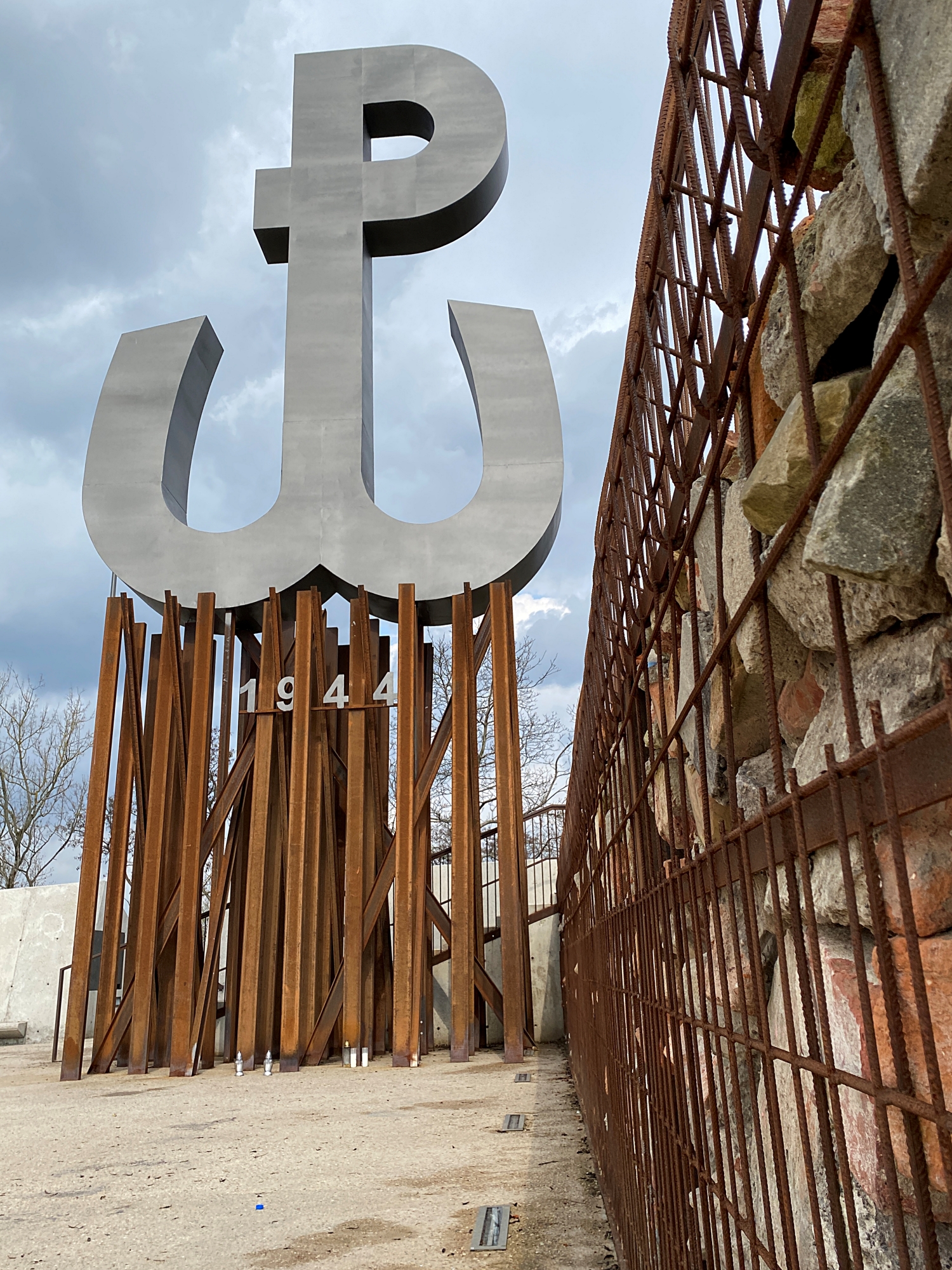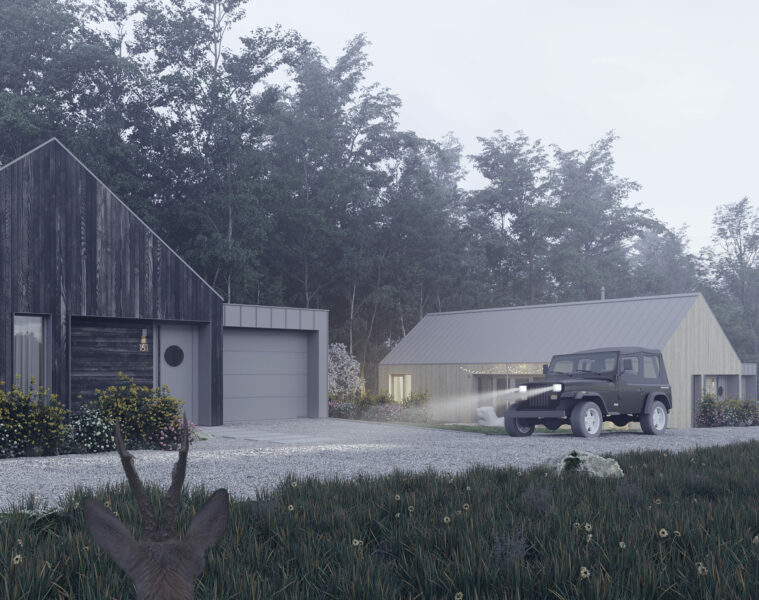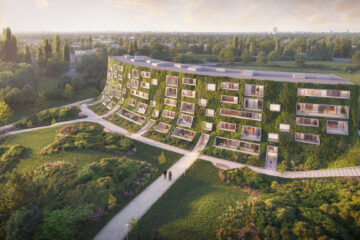The Warsaw Uprising Mound is an artificial hill raised after the war from the rubble soaked in the blood of the destroyed capital. It is a place of great symbolism where ceremonies commemorating the anniversaries of the outbreak of the Warsaw Uprising are held every year on 1 August at 9pm. Czerniakowski Mound and the surrounding park, named the “Storm” Action Park, were modernised and reopened at the end of July 2023.
The idea of raising a mound in Warsaw from the ruins of the city appeared as early as 1945. This was championed by Stanislaw Gruszczynski, an engineer and architect from the Capital Reconstruction Bureau. The author of the concept proposed to call it, among other things: “Monument to Demolished Warsaw”, “Tomb of Warsaw” or “Mound of Freedom”. Gruszczyński died in 1958 without seeing the realisation of his idea.

The laying of the current mound began after 1945, with rubble from destroyed Warsaw buildings being brought to Czerniaków. It was one of four such places in the city, next to the Moczydłowski Mound, the Szczęśliwicka Hill and the now non-existent mound at the exit of Krasińskiego Street. As late as in the 1960s, rubbish trucks would drive onto the mound, dumping debris and rubbish here, hence it was commonly referred to as ‘Zwałka’ or ‘Śmieciarka’. Around 1998, the environment of the World Association of Home Army Soldiers, on the initiative of Lt. Col. Eugeniusz Ajewski, pseud. ‘Kotwa’, proposed cleaning up the mound and naming it ‘Mound of National Remembrance’. After discussions with the ŚZŻAK milieu, Warsaw councillors passed a resolution on 24 March 2004 to name it the “Warsaw Uprising Mound”. On the occasion of the 60th anniversary of the outbreak of the Warsaw Uprising, the top of the mound was tidied up and a staircase was built to enable comfortable access from Bartycka Street.
Stairs to the Warsaw Uprising Mound before and after reconstruction. Photo: Shalom, CC BY-SA 3.0, via Wikimedia Commons and whiteMAD/Mateusz Markowski
A several-metre-high symbol of the Fighting Poland was installed on a cobbled plane. The monument was designed by a Home Army soldier, Lt. Col. Ing. Eugeniusz Ajewski, an architect. Two commemorative plaques were placed on both sides of the monument. A staircase led to the top, which since August 2004 has borne the name of ‘W’ Hour Avenue. Along the stairs, hundreds of small wooden crosses were placed, girded with red and white bands during the uprising anniversaries. Years later, the mound lost its former character, so in 2018 work began on preparing for the modernisation of the hill and the area around it. The actual redevelopment began in 2021 and was completed two years later, on the eve of the next anniversary of the uprising.
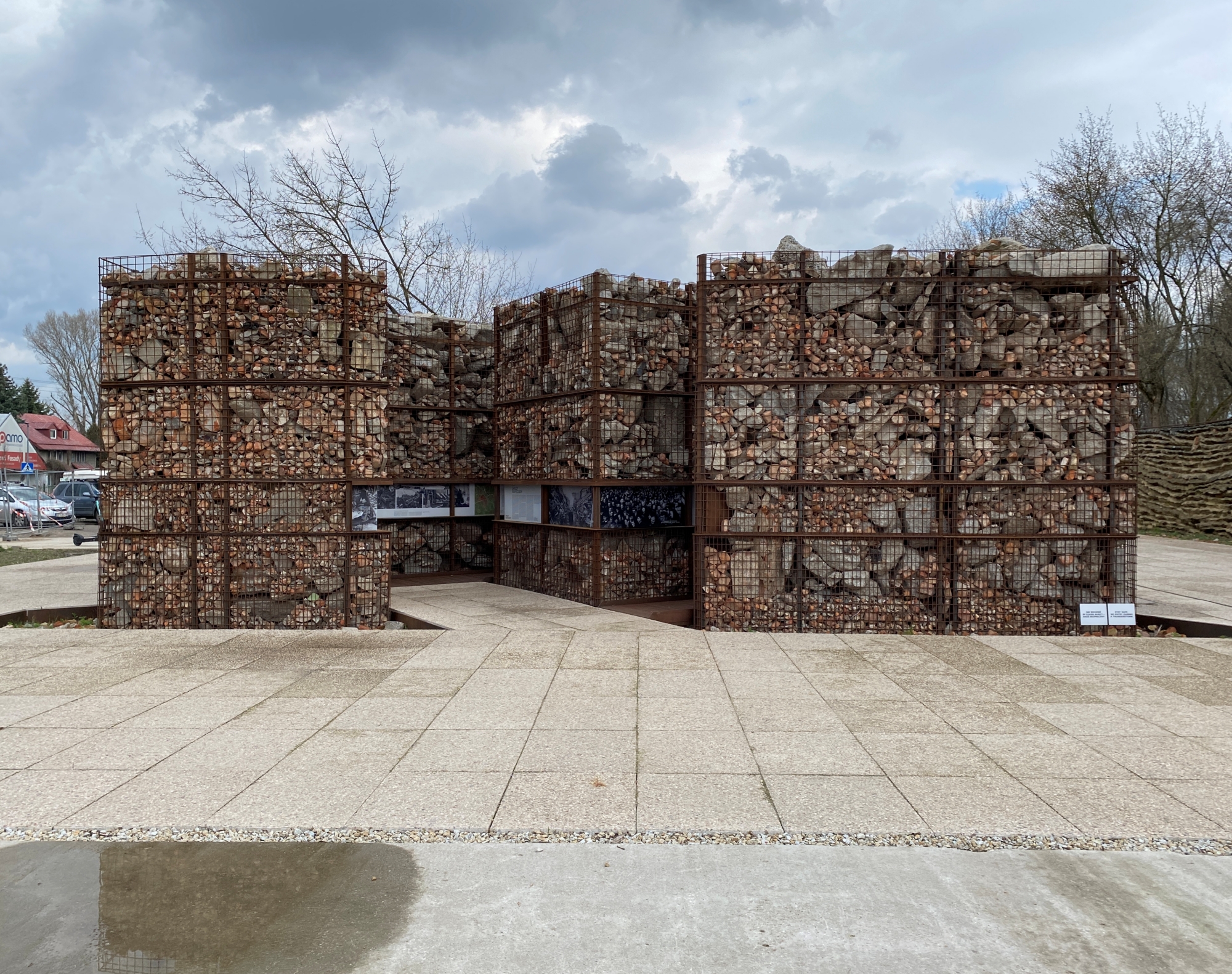
The best concept turned out to be the design of the topoScape and Archigrest studios. As part of the extensive works, a number of sites were created that refer to the memorable events of 1944. At the entrance from Bartycka Street there is a historical exhibition telling the story of the rebuilding of Warsaw. The ruins of Warsaw have been exposed in gabions, along with information boards. A similar treatment on a smaller scale has been applied along the renovated steps of the W Hour avenue, where individual elements of the former capital, excavated from the rubble, are presented. Visiting the exhibition, one gets the impression of wandering through a labyrinth of ruins of the destroyed city. The Warsaw Uprising Mound also refers to history. At its top, there is a two-storey viewing platform with a renewed symbol of Fighting Poland mounted on a new plinth. For 63 days, from 1 August to 2 October, the monument is illuminated in a way that imitates a flame.
The symbol of Fighting Poland before and after reconstruction. Photo Wistula, CC BY 3.0, via Wikimedia Commons and whiteMAD/Mateusz Markowski
Traditionally, on 1 August, the anniversary of the outbreak of the Warsaw Uprising, ceremonies are held on the mound at 21:00, during which a bonfire of remembrance is lit, with a fire brought by the “relay of generations” from the Tomb of the Unknown Soldier. The relay is made up of veterans, soldiers, scouts and city guards. The bonfire burns for 63 days, until 3 October, and is maintained by the City Guard.
Source: um.warszawa.pl, polska-zbrojna.pl
Read also: Architecture in Poland | Squares , Squares, Parks | Greenery | Warsaw | History







